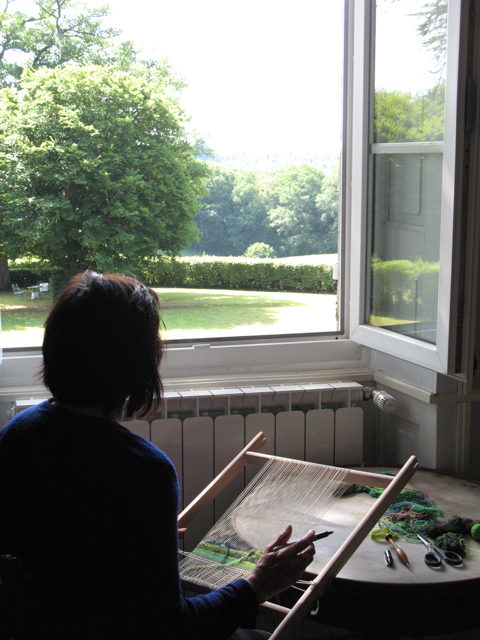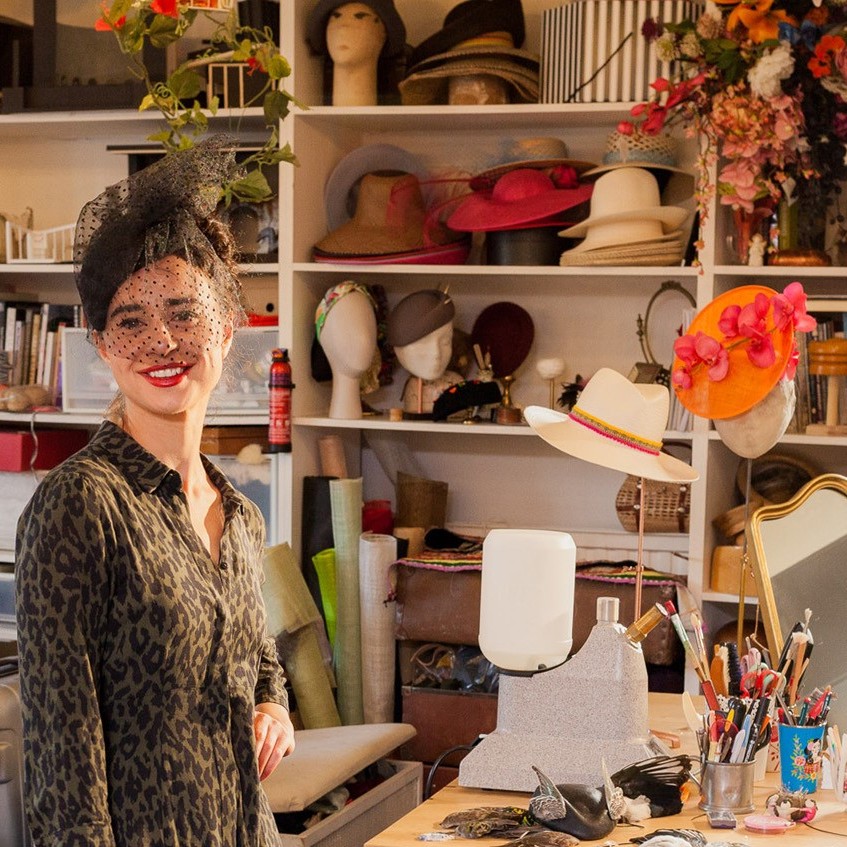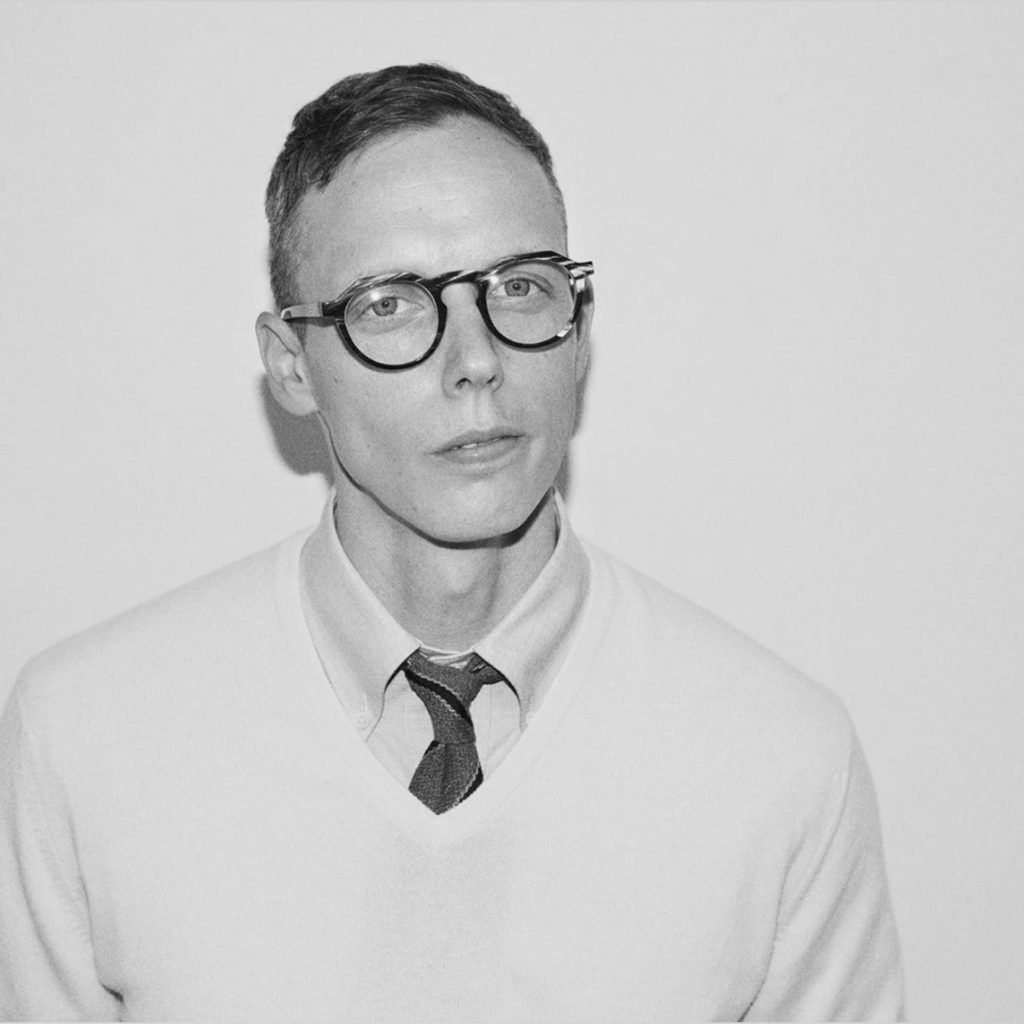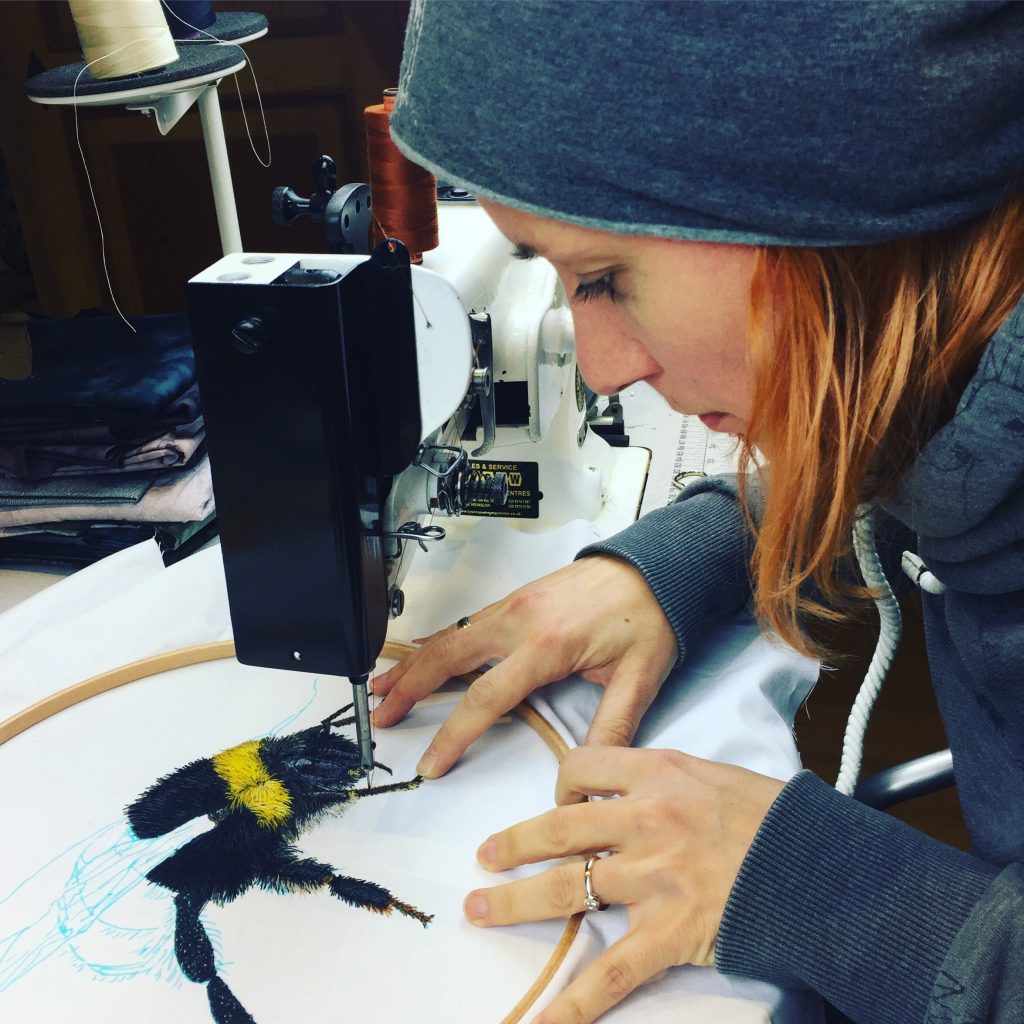Cresside Collette Tapestry Tour of Europe
My signature Zoneone Arts question – what are the most important design elements?
I trained originally as a Graphic Designer but from an early age I drew and painted. It just seemed to be a natural part of my life. When I was a teenager I started making large wall hangings – embroidering and appliquéing fabrics onto hessian backings. It seemed an inevitable step to want to create the whole fabric and learning to weave tapestry gave me those skills.
The most important design elements to me are colour, line, tone and shape. Tapestry gives you the added bonus of texture and complete colour saturation as the weave absorbs rather than reflects light.
I feel fortunate to have had a long career as a tapestry artist- exhibiting my own work, studying, and teaching the technique to others. I can’t imagine my life without it.
Can you tell us about the importance of the time you spent in Edinburgh doing post Graduate studies?
I was awarded an Overseas Study Grant by the Crafts Board of the Australia Council in 1979 to study at Edinburgh College of Art in the only tapestry department within an art school at that time. I had spent four years as a production weaver at the Victorian Tapestry Workshop (now ATW) honing my weaving skills and conforming to the strict regime of excellence that being a workshop weaver demands.
My teachers in Edinburgh, Maureen Hodge and Fiona Mathison, opened my eyes to the expressive qualities of the medium and to conceiving work as an artist who was willing to take visual and technical risks to produce interesting tapestry.
Explain about your time at Bundanon in NSW?
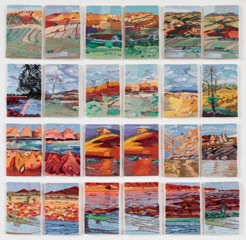 In 1990, whilst a weaver at the Victorian Tapestry Workshop, I wove a tapestry based on one of Arthur Boyd’s Shoalhaven landscape paintings, gaining a strangely intimate knowledge of its features.
In 1990, whilst a weaver at the Victorian Tapestry Workshop, I wove a tapestry based on one of Arthur Boyd’s Shoalhaven landscape paintings, gaining a strangely intimate knowledge of its features.
Consequently, being resident at Bundanon became, for me, a very special experience, seeing first hand the places that had inspired his art. However, I had to make these landscapes my own and to imprint my personal stamp of observation on them.
Responding to the openness, vividness of colour and sheer beauty of the surrounding bush I started to work “en plein air” with a small frame propped on my knees, weaving the scene before me directly onto the warp without any preparatory sketches. This is a very immediate way of working in tapestry — normally a very painstaking process — with aesthetic decisions being made constantly with the changing patterns of sunlight and passing clouds. The endless choices gave an exciting fluidity to the exercise, giving the pieces a fresh vitality in their reflection of light, colour and atmosphere. As far as I know this technique had not been adopted by other weavers.
My experience at Bundanon has led to working “en plein air” in many interesting locations including Sri Lanka and France.
What does success mean to you?
Doing something I love on a daily basis.
What is your favourite tapestry and why?
The Lady and the Unicorn Suite at the Musee du Moyen Age in Paris because it constitutes the creative and technical peak of Mediaeval tapestry. Woven in Brussels in the 15th C. it is exquisite in its fineness of weave and intricate detail depicting courtly costumes and flora and fauna in six charming tableaux. Five of the tapestries allude to the five senses and the sixth to the rejection of material possessions in favour of true love.
You show at exhibitions – why do you see exhibiting as important to your career?
As a visual artist exhibiting your work is the only way it can be seen, appreciated or purchased.
Website: www.cressidecollette.com
Think a colleague or friend could benefit from this interview?
Knowledge is one of the biggest assets in any business. So why not forward this on to your friends and colleagues so they too can start taking advantage of the insightful information the artist has given?
Other artists you may be interested in:


